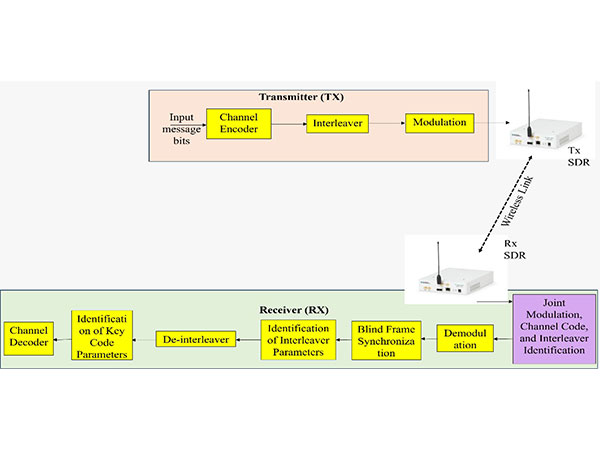IIT Indore's Breakthrough in Intelligent Receivers for Enhanced 6G Communication
Indian Institute of Technology Indore is pioneering intelligent receivers to improve 6G performance and military security. Led by Dr. Swaminathan R, the project uses deep learning algorithms to enable receivers to decode complex signals, enhancing efficiency and reducing costs by avoiding the need for multiple receivers. Testing is ongoing with government support.

- Country:
- India
The Indian Institute of Technology (IIT) Indore is at the forefront of communication technology with a groundbreaking project aimed at advancing communication systems. Under the supervision of Dr. Swaminathan R from the Electrical Engineering Department, the team is developing intelligent receivers capable of automatically detecting and decoding pivotal communication techniques such as modulation, channel coding, and interleaving. These innovations promise to enhance 6G capabilities, fortify military communication security, and make systems more economical by reducing the need for numerous receivers.
Crucial for the future of 6G networks and military communications, this technology allows receivers to interpret signals even in adverse conditions, like interception scenarios in military operations. By auto-identifying these methods, it's vital for intelligence operations, ensuring the capture of significant data even from obscure or noisy signals. IIT Indore Director, Prof Suhas Joshi, highlighted the transition towards 6G, emphasizing the necessity for systems to manage ultra-fast mobile internet and extensive device networks, such as IoT. Unlike traditional multiple receiver systems, IIT Indore's solution strives for a singular, adaptable receiver.
Deep learning algorithms are pivotal in this innovation, allowing receivers to decode signals in complex wireless environments, optimizing radio frequency usage amid the 5G and 6G surge. These intelligent receivers significantly conserve energy by minimizing redundant data transmissions. Prof Swaminathan noted the potential revolution in telecommunications and military sectors through improved efficiency and security, with the IIT receivers exceeding previous capabilities by jointly recognizing modulation, coding, and interleaving methods. Current tests show promising results in identifying various channel encoders and interleavers, with ongoing real-time testing and an extension to cover a broad spectrum of communication standards, from 3G to 6G.
Testing is being conducted using software-defined radio (SDR) devices, backed by support from essential government bodies, including the Ministry of Electronics and Information Technology, the Council of Scientific and Industrial Research, and the Department of Telecommunications under a special 6G research initiative.
(With inputs from agencies.)










